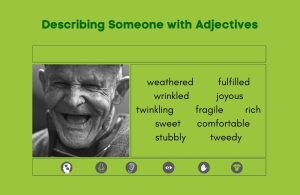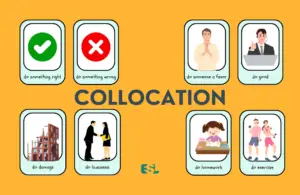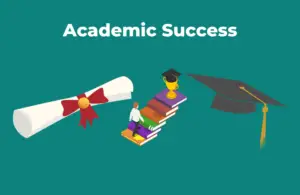Whether you are learning to drive, planning a road trip, or simply commuting daily, familiarizing yourself with driving and transportation vocabulary can significantly enhance your understanding and communication of scenarios on the road.
This comprehensive guide delves into commonly used terms related to driving and transportation, providing you with an easy reference for learning and understanding this important vocabulary.
Table of Contents
- 1. Types of Vehicles
- 2. Driving Actions and Experiences
- 3. Traffic Rules and Regulations
- Sample Conversation: Using Vocabulary Related to Driving and Transportation
- Conclusion
- FAQ: Vocabulary Related to Driving and Transportation
1. Types of Vehicles
From two-wheelers to heavy vehicles, there is a wide range of transport means on the roads. Here are some common words related to different types of vehicles.
| Word/Phrase | Meaning/Usage | Example Sentences |
|---|---|---|
| Sedan | A car seating four or more with a fixed roof that is full-height up to the rear window | “My father drives a black sedan.” |
| SUV | Sports Utility Vehicle, a rugged vehicle with four-wheel drive designed for off-road use | “The family decided to buy an SUV for their road trips.” |
| Coupe | A car with a fixed roof and two doors | “He just bought a new sports coupe.” |
| Hatchback | A car with a door across the full width at the back end that opens upward to provide easy access for loading | “The hatchback is perfect for our small family.” |
| Convertible | A car with a roof that can be removed or folded down | “She always dreamed of driving a convertible along the coast.” |
| Motorcycle | A two-wheeled vehicle that is powered by a motor and has no pedals | “He enjoys riding his motorcycle on the weekends.” |
| Truck | A large, heavy motor vehicle used for transporting goods, materials, or troops | “We hired a truck to move our furniture to the new house.” |
| Bus | A large motor vehicle carrying passengers by road, typically one serving the public on a fixed route and for a fare | “I take the bus to work every day.” |
| Van | A vehicle used for transporting goods or people, typically one smaller than a truck and larger than a common car | “They used a van to deliver the packages.” |
| Bicycle | A vehicle composed of two wheels held in a frame one behind the other, propelled by pedals and steered with handlebars attached to the front wheel | “She rides her bicycle to school every day.” |
If you are searching for an effective English language vocabulary builder, try Word Power Made Easy: The Complete Handbook for Building a Superior Vocabulary (Amazon Link). This time-tested classic has helped millions achieve mastery of English and improve their communication skills in business, the classroom, and in life.
2. Driving Actions and Experiences
Driving involves several actions, experiences, and responsibilities. Here are some words associated with driving actions and experiences.
| Word/Phrase | Meaning/Usage | Example Sentences |
|---|---|---|
| Accelerate | To increase in speed or rate | “You need to accelerate to merge onto the highway.” |
| Brake | To slow down or stop a vehicle | “She had to brake suddenly when a cat ran in front of the car.” |
| Commute | Travel some distance between one’s home and place of work on a regular basis | “My daily commute to work takes about 30 minutes.” |
| Yield | Give way to other road users | “The sign indicated that drivers should yield to pedestrians.” |
| Merge | Move into one lane from another | “He signaled before he merged into the right lane.” |
| Tailgate | Drive too closely behind another vehicle | “The driver behind me was tailgating, which was making me nervous.” |
| Overpass | A bridge by which a road or railroad passes over another | “Take the overpass to avoid the busy intersection below.” |
| Detour | A long or roundabout route taken to avoid something or to visit somewhere along the way | “The construction work on the main road forced us to take a detour.” |
| Hitchhike | Travel by getting free lifts in passing vehicles | “In his youth, he would often hitchhike across the country.” |
| Roundabout | A road junction at which traffic moves in one direction around a central island to reach one of the roads converging on it | “Take the second exit at the roundabout.” |
3. Traffic Rules and Regulations
Traffic rules and regulations help maintain order on the roads. Here are some keywords related to these rules and regulations.
| Word/Phrase | Meaning/Usage | Example Sentences |
|---|---|---|
| Speed limit | The maximum speed at which a vehicle may legally travel on a particular stretch of road | “The speed limit on this highway is 70 mph.” |
| Zebra crossing | A type of pedestrian crossing marked by black and white stripes | “Always stop for pedestrians at a zebra crossing.” |
| Traffic light | A set of automatically operated colored lights for controlling traffic at road junctions and crosswalks | “The traffic light turned red just as I was approaching the intersection.” |
| Stop sign | A red octagonal sign that requires drivers to stop completely, observe, and proceed when it is safe to do so | “The driver didn’t stop at the stop sign, which is a traffic violation.” |
| No parking | An area where parking is prohibited | “The sign indicated a no parking zone.” |
| One-way street | A street where vehicles are allowed to travel in one direction only | “He accidentally drove the wrong way down a one-way street.” |
| Seat belt | A strap in a vehicle fastened around a passenger to prevent them from being thrown out of the seat in a crash | “Always wear your seat belt when you’re in a car.” |
| Speed bump | A ridge set in a road surface to make vehicles reduce speed | “Watch out for the speed bump ahead.” |
| Jaywalking | The act of crossing a street at a place not marked for pedestrian crossing | “Jaywalking can be dangerous and is illegal in many places.” |
| Drunk driving | The act of operating a vehicle after consuming alcohol | “Drunk driving is a serious offense and could lead to tragic accidents.” |
To elevate your vocabulary in just 30 days, I recommend to my students an informative, fun, and accessible guide to utilizing powerful language. Millions of individuals have enhanced their academics, job skills, and confidence by dedicating just fifteen minutes daily to the exercises and tests of 30 Days to a More Powerful Vocabulary (Amazon Link), a top-selling. It offers step-by-step methods to bolster language prowess, discover compelling words, and daily vocabulary enhancement with pronunciation guidance.
Sample Conversation: Using Vocabulary Related to Driving and Transportation
Situation: At a local café, Jamie and Chris discuss their daily commutes and share some recent experiences on the road.
Jamie: Hey Chris, I heard you recently got a new “sedan”. How’s it been driving in the city traffic?
Chris: It’s been pretty smooth, Jamie. The car’s “automatic transmission” makes it much easier, especially during “rush hour”. However, I’ve noticed quite a few “potholes” on Maple Street.
Jamie: Oh, those can be a nightmare for “tires”! By the way, have you tried using the new “carpool lane” on the highway? I’ve heard it’s faster during peak times.
Chris: Yes, I have! It’s indeed quicker, but you need at least two “passengers” to qualify. I usually take that route when dropping my kids off at school.
Jamie: Smart move. I’ve been thinking of switching to “public transportation” occasionally. The new “metro line” seems efficient, and it’d save me from the hassle of “parking”.
Chris: That’s true. Plus, it’s eco-friendly. Using “mass transit” options like buses or trains can significantly reduce our “carbon footprint”.
Conclusion
Driving and commuting entail more than merely operating a vehicle. They involve understanding various types of vehicles, actions, experiences, and traffic rules, all of which contribute to making our journeys safer and more efficient.
This guide provides you with essential driving and transportation vocabulary to boost your knowledge and communication skills. Remember, staying informed and using appropriate vocabulary can help ensure a better understanding of situations on the road and can even contribute to overall road safety.
FAQ: Vocabulary Related to Driving and Transportation
1. What is a “sedan”?
A “sedan” is a type of passenger car characterized by a three-box configuration with separate compartments for the engine, passenger, and cargo.
2. How does “automatic transmission” differ from manual?
An “automatic transmission” shifts gears on its own based on the vehicle’s speed and engine RPM, while in a manual transmission, the driver manually changes gears using a clutch.
3. What do we mean by “rush hour”?
“Rush hour” refers to periods during the day when traffic congestion is at its highest, typically due to large numbers of people commuting to or from work.
4. Why are “potholes” a concern for drivers?
“Potholes” are depressions or holes in the road surface, usually caused by wear and weathering. They can damage vehicles, especially tires and suspensions, and can pose safety risks.
5. How does the “carpool lane” function?
A “carpool lane”, also known as an HOV (High Occupancy Vehicle) lane, is reserved for vehicles with multiple passengers, encouraging carpooling and reducing traffic congestion.
6. Why is “public transportation” considered beneficial?
“Public transportation”, like buses, trains, and metros, can reduce road congestion, lower pollution levels, and is often more cost-effective than maintaining a personal vehicle.
7. What is a “metro line”?
A “metro line” refers to an urban rail system operating within a city or metropolitan area, often running both underground and on elevated tracks.
8. Why can “parking” be a challenge in urban areas?
“Parking” can be limited in densely populated areas due to space constraints, leading to difficulty finding spots and sometimes expensive parking fees.
9. How does “mass transit” impact the environment?
“Mass transit” systems, like buses or trains, can transport a large number of people efficiently, reducing the number of individual vehicles on the road and thus decreasing pollution and greenhouse gas emissions.
10. What does “carbon footprint” refer to in transportation?
“Carbon footprint” refers to the amount of carbon dioxide emissions for which an individual or activity is responsible. Using public transport or carpooling can help reduce one’s carbon footprint compared to driving alone.






